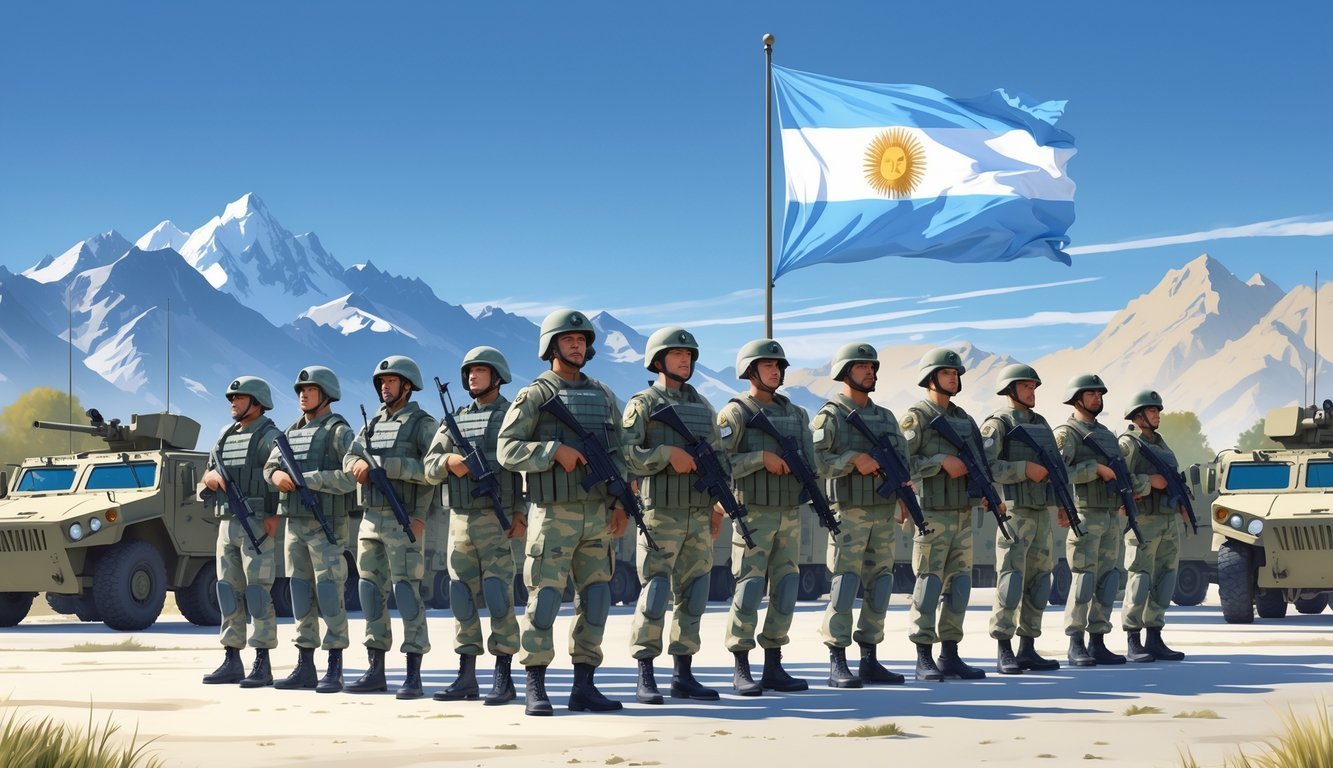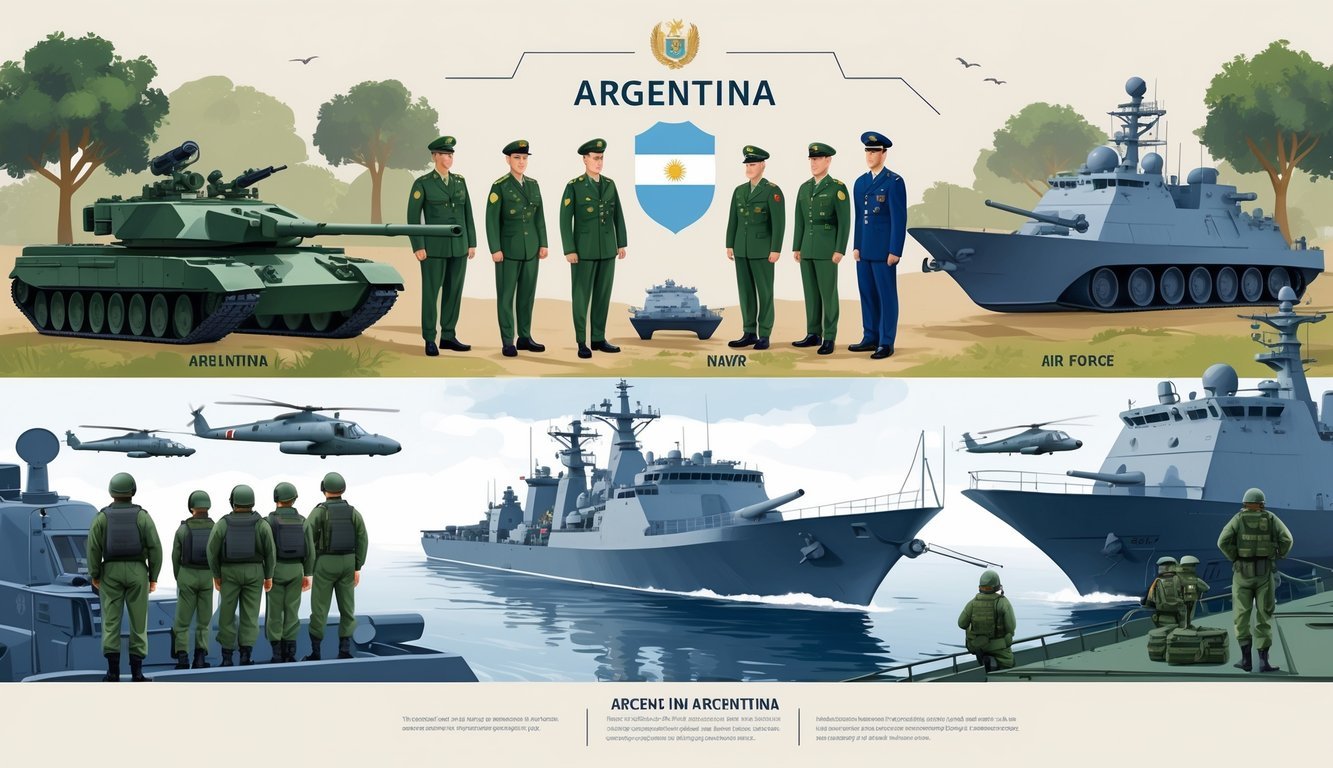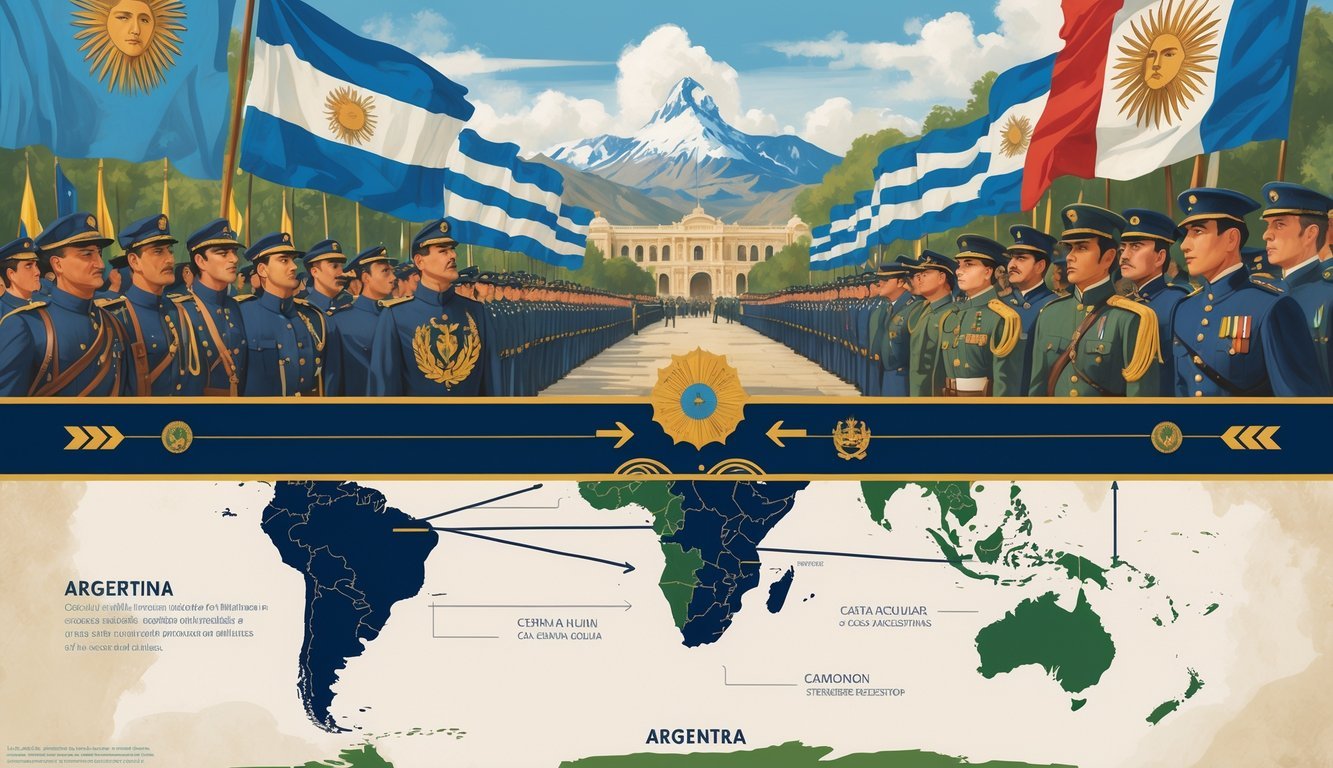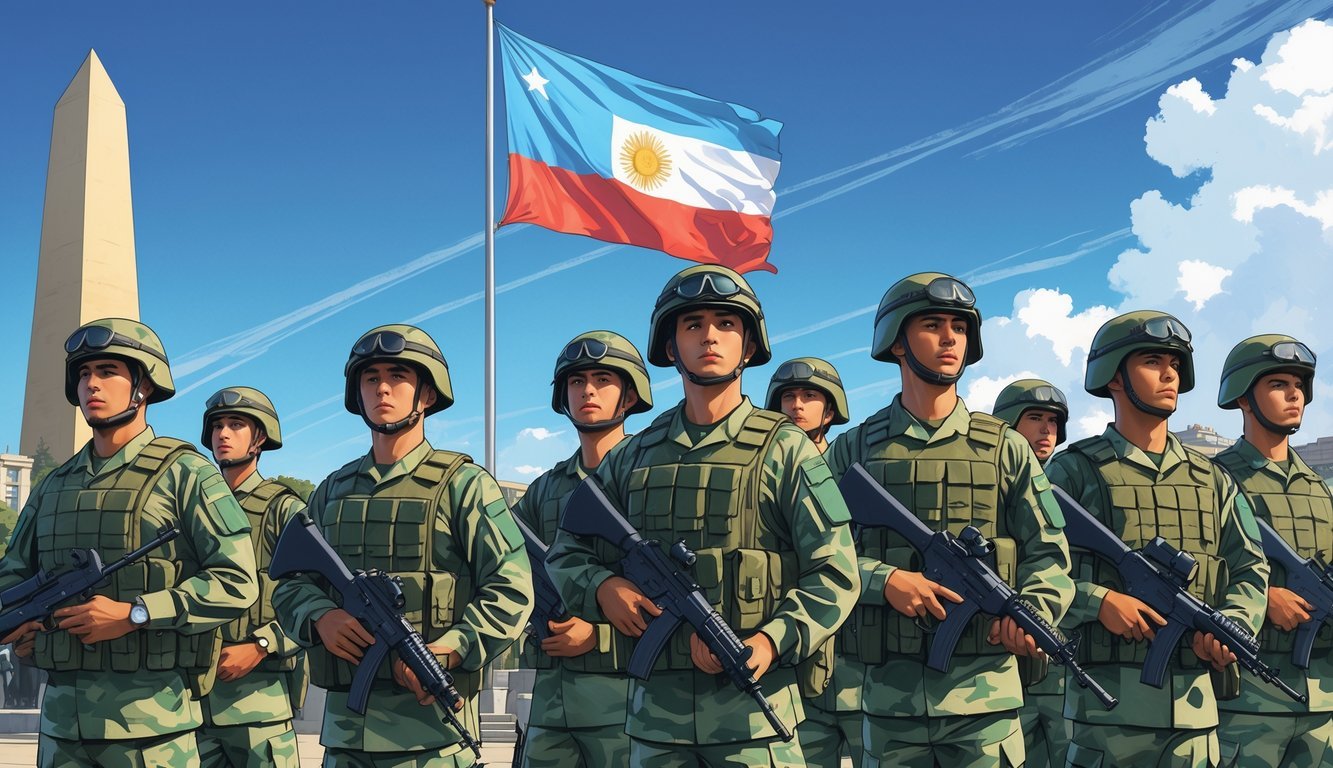PsychNewsDaily Publishers
100 Summit Drive
Burlington, MA, 01803
Telephone: (320) 349-2484
PsychNewsDaily Publishers
100 Summit Drive
Burlington, MA, 01803
Telephone: (320) 349-2484
Argentina's military consists of three branches—Army, Navy, and Air Force—serving since the early 1800s to protect national interests and participate in international peacekeeping.

Argentina’s military plays a huge role in the country’s security and history. It’s got three main branches: the Army, Navy, and Air Force.
Argentine Armed Forces have been active since the early 1800s. They keep working to protect the nation and support its interests at home and abroad.
You’ll notice the military has shaped Argentina’s political and social life for a long time. It really started during the fight for independence and grew through big events like the 1930 army takeover.
These days, the armed forces focus on defending the country and helping out in peacekeeping missions.
Learning about Argentina’s military gives you a window into the country’s past and its place in the world. If you know how it works and where it came from, you get a clearer sense of Argentina’s strengths and challenges.

The Argentine military organizes itself to cover land, sea, and air defense. You’ll see each branch in action, who’s in charge, and how budgets shape their training and gear.
Three main branches make up the Argentine Armed Forces: Army, Navy, and Air Force. The Army runs about eleven active brigades, including the Buenos Aires Military Garrison and the Army Air Command.
It focuses on land defense, using vehicles and helicopters. The Navy keeps watch over Argentina’s long coastline with ships, submarines, and naval aircraft.
It also supports national security on the water. The Air Force protects the skies, flying fighter jets, transport planes, and helicopters.
Together, these branches cover all the country’s defense needs.
The President of Argentina acts as the Commander-in-Chief of the Armed Forces. That means the president calls the shots on military decisions.
The Minister of Defense, currently Luis Petri, handles the day-to-day running of the military and manages its budget. Military officers report to him and coordinate each branch’s work.
The command system connects the active and reserve forces. It keeps training and readiness in line with national goals.
Argentina spends a chunk of its GDP on defense, though the amount goes up and down with the economy. The defense budget pays for salaries, training, and buying or updating vehicles, helicopters, and fighters.
Modernization matters a lot. Argentina puts money into new tech to make sure the military stays ready for whatever comes next.
But, funds are tight, so they have to balance spending on equipment, people, and maintenance to meet their needs.

Argentina’s military has shaped the country’s politics and its place in the world. You’ll see how its past still affects democracy and society, the big conflicts it’s been in, and its current alliances.
The Argentine military interrupted democracy many times in the 20th century. Between 1930 and 1976, military coups toppled several elected leaders.
The National Reorganization Process started with the 1976 coup against Isabel Perón. During this era, the military used repression and state terror, causing thousands of people to become disappeared for suspected links to groups like ERPs and Montoneros.
Human rights violations ran rampant, and protests against the military faced harsh crackdowns. In the 1980s, Argentina finally returned to democracy under Raúl Alfonsín, who kicked off the Trial of the Juntas to hold military leaders responsible.
Since then, the military has slowly changed its role, but the past still lingers in society and politics.
Argentina’s military fought the Falklands War in 1982 against Britain over the South Atlantic islands. This war hit national pride hard and ended in defeat.
After that, the military shifted from internal control to more international missions. Now, Argentina takes part in peacekeeping and humanitarian missions under United Nations mandates.
You’ll spot Argentine troops in places where they work to keep peace and provide aid. This new focus helps Argentina build a reputation as a responsible global partner instead of a country stuck in conflict.
Argentina has built important alliances with countries like the United States, Brazil, Chile, and several European nations—Spain, France, and Germany among them. The U.S. calls Argentina a major non-NATO ally, which boosts security cooperation and opens doors to foreign military financing.
The military also teams up with partners like Israel, Canada, Russia, and Turkey. These relationships involve joint training, sharing intelligence, and exchanging technology.
In Latin America, Argentina stands out as a key player, balancing influence between the West and others. Its foreign policy aims for strong defense ties and supports peace and development both regionally and globally.
| Key Partners | Type of Cooperation |
|---|---|
| United States | Security cooperation, financing |
| Brazil and Chile | Regional defense and training |
| European countries | Technology exchange, joint exercises |
| United Nations | Peacekeeping missions |

Here are some answers about key moments in Argentina’s military history, its current strength, equipment, ranks, budget, and aircraft.
The military coup in Argentina happened in 1976 after years of political instability and economic trouble. The military stepped in to stop unrest, but it ended up leading to a harsh dictatorship known as the Dirty War.
Argentina’s military sits in the middle range for strength. It’s not a top global power, but it keeps a capable force for regional defense.
Its main influence stays in South America.
The Argentine military uses both older and a few modern pieces of equipment. You’ll see tanks, armored vehicles, naval ships, and aircraft, mostly from older U.S. and European models.
Ranks look pretty similar to other countries’ systems. There are officers like lieutenants, captains, and generals.
Enlisted ranks include privates, corporals, and sergeants.
Argentina’s military budget is modest compared to bigger countries. It usually gets a small slice of the national budget, just enough to maintain current forces and equipment.
Yes, Argentina does have its own fighter jets.
The fleet is pretty limited, though, and some of the planes are definitely outdated.
The Air Force mainly uses these aircraft for defense and patrol, not really for cutting-edge combat missions.